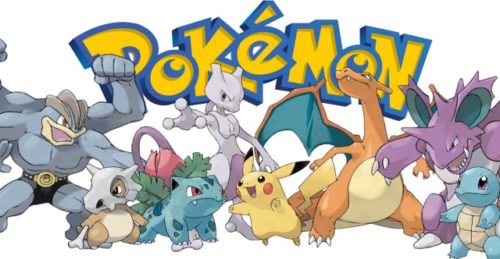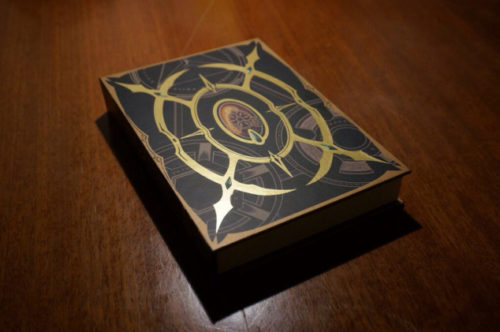Over the past month, the new mobile virtual game Pokémon Go has taken the world by storm. The app is now reportedly the biggest mobile game in U.S. history. According to the SurveyMonkey Intelligence blog, Pokémon Go has exceeded by several million the daily peak users record held by Candy Crush. Within “three days of release” the game attracted more users than Twitter and now, according to the blog, the breakout game is aiming “for Snapchat and Google Maps.”

What is Pokémon Go? It is a mobile game application created by the same team that originated the Pokémon franchise in 1996. Just as in the original concept, the user is a Pokémon trainer who must gather Pokémon, or fictional “pocket monsters,” to train for battle. Using GPS locators, the game “places” Pokémon virtually within the users real space. They are on sidewalks, in homes and in buildings. Trainers can “see” when these virtual creatures are near and must get within a certain distance to catch them. But there is far more to it than that, including PokeGyms, PokeSpots, battles, leveling up, teams and more.
![Rattata found roadside in South Georgia [Photo Credit: E. Howard]](https://wildhunt.org/wp-content/uploads/2016/07/IMG_1273-336x500.jpg)
Rattata found roadside in South Georgia [Photo Credit: E. Howard]
However, when are we ever satisfied with the easy answer?
So let’s get out our flux capicitors and head back in time 20 years to when Pokémon first arrived on the pop culture scene.
In the not-so-distant past, Satoshi Tajiri imagined a video game that involved users catching bugs and training them to fight. After six years of consideration and negotiations, the idea became Pocket Monsters, which was shortened to Pokémon. In February 1996, Nintendo released two Pokémon games for its popular handheld Game Boy system. The games weren’t an instant hit, but there was enough buzz for the launch of the first generation card game in October of that year, and an anime cartoon series the following spring.
And the rest, as they say, is history.
It didn’t take long for the new franchise to generate backlash. Excitement surrounding the card game built to near fever-pitch among children. Many school officials opted to ban the game from their campuses due to a variety reasons, including: distraction, competition, excessive commercialism, fights, and the violence of in-game battles themselves.
Along with those practical and secular concerns, another issue arose; this one of a moral variety. Religious groups began to speak out against the franchise’s promotion of immorality, which some labeled satanic. They equated the game’s symbology and monstrous qualities to demonology, mysticism, Witchcraft, Wicca and modern Paganism. In one video sermon, a pastor explains:
Pokémon is a game that teaches children how to enter into the world of witchcraft. How to cast spells. How to use psychic phenomena. How to put to work supernatural powers against their enemies. How to fantasy role play… Pokémon World is a world of the demonic, of the satanic.
Several of the Pokémon histories suggest that reactions, similar to that above, led to the creation of the Christian card game Redemption. However, this Bible-based trading card game was created and released an entire year before the Pokémon came on the scene. Redemption was more a reaction to the lingering memories of Dungeons & Dragons and the contemporary success of Magic: The Gathering and other similar gaming offshoots.
Redemption‘s creator Rob Anderson said, “Many of the games available had dark and horrific themes […] Much of what is offered in the collectible trading card game market is difficult to reconcile with the Christian faith.” Although Anderson’s card game preceded Pokémon, the idea was the same and the arrival of Pokémon only fueled the flames of that fear and ideology.
The Christian backlash became so prevalent that the Catholic Pope reportedly spoke out. In 2000, the Vatican TV satellite station announced, on his behalf, that “Pokémon trading cards and the computer game is [sic] ‘full of inventive imagination,’ has [sic] no ‘harmful moral side effects’ and is [sic] based on the notion of ‘intense friendship.’ ”
While the Pope’s alleged message signaled his followers to relax, others, outside of the Christian and Catholic world, remained unconvinced. As reported in 2001 by the BBC and other outlets, as the cards reached the Muslim world, national leaders began actively banning the franchise because they believed it promoted gambling and other immoral activities. Saudi leaders specifically called it a “Jewish conspiracy” that promoted Zionism. Interestingly, these same leaders also identified as a problem the franchise’s use of “crosses, sacred for Christians and triangles, significant for Freemasons.”
In 2001, the Anti-Defamation League responded to the cries of “Jewish conspiracy,” calling them “outrageous.” But, several years prior, ADL had its own concerns with two specific Pokémon cards (Golbat and Ditto) that contained what looked like a swastika. As explained in an ADL press release, the symbol on the cards were “intended to represent a ‘manji’ sign ascribed to Buddhism and Hinduism.” These versions of the two cards were only suppose to be released in Japan where the image would be understood as such. However, due to the game’s popularity, the cards made it to the U.S. where the symbols were read as a swastika.
In 1999, Abraham H. Foxman, ADL national director said, “In today’s shrinking world due to globalization, what is deemed appropriate or acceptable by one culture may have a significantly different meaning in another.” Nintendo did reportedly take the ADL complaint seriously and responded to the group’s satisfaction.
![[Photo Credit: Jarek Tuszyński / Wikimedia]](https://wildhunt.org/wp-content/uploads/2016/07/Pokemon_collection-500x332.jpg)
[Photo Credit: Jarek Tuszyński / Wikimedia]
Putting things in context, this era, 1996-2000, occurred just after the notorious satanic panics in the U.S. and U.K., and it also followed on the tail end of a pop culture Witch craze. This was a period that saw the release of The Craft and the reign of The X-Files, Sabrina, and Buffy the Vampire Slayer. J.K. Rowling had just released a new book called Harry Potter and the Philosopher’s Stone, which would soon become an international best-selling series and movie franchise.
While the pop culture engine generally and slowly shifted from a high concentration of satanic Witches to other occult or fantastic themes, the interest in magic and mysticism never died. Cultural fears and desires, relating to social issues, politics and more, continued to play out in various fantasy narratives. Pokémon played into this collective dreaming.
Additionally, the game was a feature of the shrinking global culture, which was precipitated by the internet and an increasingly tech-driven world. Not only was the card game a symbol of this new world-based digital cultural phenomenon, but it was also a distraction for a generation of children, who were showing a decreasing interest in attending religious services, as noted by Pew Forum.
Now let’s go back to the future….
It is now 2012, with the internet and social media in full swing. A blog site called Playing4Real published a mock Time magazine interview with Satoshi Tajiri. The post, titled, “Pokémon Creator Admits Games are Anti-Christian, Aimed Towards Satanists,” was not marked clearly as satire. The mock interview has Satoshi Tajiri saying, in part:
Tajiri: Yes. Pokémon is essentially the correct answer towards life, not Christianity. Everything presented in the game is the opposite of what Christians may believe. Some have said that the game promotes voodoo or magic, and I agree in the sense that there are many things that occur in nature that are unexplainable …
Any regular user of social media might expect what happened next. The Playing4Real post was shared with wild abandon. The fake interview inspired a new round of Pokémon backlash, feeding any still lingering demonic origin theories.
For example, as published in 2010, opponent Brett Peterson compared the Pokémon universe’s use of the elements as equivalent to that use in modern Pagan practice. Peterson wrote, “Most Pagan and earth based religions and philosophies find power in the Four Elements? Earth, Water, Fire, and Wind. These are the energy cards in the Pokémon game! […] What are we allowing to come into our homes!”
Yet, at the very same time, another cultural reality was being birthed, one that makes that same connection between the occult and modern Paganism, but from an entirely different angle. This new reality can be found embedded in the growing practice of Pop Culture Paganism. As an example, the owner of the Pokemon Paganism Tumblr blog writes:
I have been working for a while now on a Pokémon elemental correspondence system based on a combination of the two most prominent systems from antiquity (Western and Eastern). So far I think I’ve come up with a pretty fleshed out system and I hope to be able to make a few posts on it in the coming weeks. My goal is to have a workable magic system to be used alongside my devotional work with the various Legendary/Mythical Pokémon. All and all I’m hoping to form a more vibrant practice that is more immersive and can also work alongside some of my more traditional polytheist practices.
The majority of people integrating Pokémon into magical practice were born in the Millennial generation or are younger. That should not be surprising, because these are the same people who grew up with the original Pokémon franchise of the 1990s.

Pokemon Tarot Deck [Publicity Image]
Let’s move forward in time again to the present.
This year, 2016, marks the 20th anniversary of Pokémon and the release of its arguably most popular game, Pokémon Go. And, although it’s based on the same gaming premise, the backlash has been decidedly different because of the way it has played out within our collective world cultures.
The new game is getting people outside and moving around, even if that movement is zombie-like or resembles herds of wild animals on a David Attenborough special. One Tumblr user wrote, “Pokémon Go deserves a nobel peace prize for getting me off my ass.”
![Pokemon show up in the most untimely of locations [Photo Credit: E. Howard]](https://wildhunt.org/wp-content/uploads/2016/07/IMG_1274-e1468780652693-304x500.jpg)
Pokemon show up in the most unseemingly of locations [Photo Credit: E. Howard]
Interestingly, many churches are reportedly labeled as PokeGyms and, as a result, groups of young people are showing up at their doorsteps to play the game. Many church leaders, such as in the Church of England, are beginning to see this phenomenon as a positive development. While the Pokératti may not stick around for sermons, leaders see this move as “a good way to start a conversation that may lead on to other things,” as noted by the BBC.
The same Pokémon game, which once was thought to have driven people from religion, is now being considered a tool to potentially lead them back.
And churches aren’t the only institutions looking to take advantage of the PokeStop or PokeGym feature. Companies, organizations and event planners are using the built-in “lure” or the “incense” game actions to bring Pokémon to their locations in hopes of attracting visitors, customers or the like. The more Pokémon at the site, or the stronger and rarer the Pokémon, the more Pokératti show up.
The Wild Hunt’s own Cara Schulz, who is running for political office in her hometown of Burnsville, has teamed up with a local restaurant and is using the game’s lure feature to attract people to her campaign event. It is a clever marketing tool that creates a pickup community space, which could potentially “lead on to other things.” As we move into Pagan Pride and fall festival season, this tool may be a marketing concept that organizers can employ to attract visitors to their own public events.
However, before a planner jumps on the band wagon, there is a downside. Do you want groups of gamers lingering on your doorstop? These players are typically more interested in catching Pokémon than the services being offered. This fact has caused problems worldwide where players create hazards for real shoppers or similar. The U.S. Holocaust Museum Memorial, for example, was made a PokeStop and has been reportedly attracting groups of loud and disrespectful Pokératti.
“Playing the game is not appropriate in the museum, which is a memorial to the victims of Nazism,” Andrew Hollinger, the museum’s communications director, told the Washington Post. “We are trying to find out if we can get the museum excluded from the game.”
As noted earlier, the PokeStops and PokeGyms are chosen by the company, and only recently has it opened up the option to suggest new locations. The system is not at all monetized, but the company has suggested that it may be in the future.
Another organization contending with Pokératti is the Westboro Baptist Church. The location was made a PokeGym, attracting battling trainers who are now allegedly vying for the right to control this particular gym in order to “troll the Church.” The church’s leaders responded with their own Pokémon-inspired message saying, “Pokémon Go and Sin No More.” One spokesperson told USA Today that they are using the “language that is understood.”

Another one caught. [Photo Credit: E. Howard]
Going back to the original question: what does Pokémon have to do with the occult? The easy response, as said earlier, is absolutely nothing.
But human culture never allows for that level of simplicity. Therefore, the actual answer is “a whole lot.”
Happy hunting.
Get ready for the seventh generation in November as a new wave of danger hits the market.
The Wild Hunt is not responsible for links to external content.
To join a conversation on this post:
Visit our The Wild Hunt subreddit! Point your favorite browser to https://www.reddit.com/r/The_Wild_Hunt_News/, then click “JOIN”. Make sure to click the bell, too, to be notified of new articles posted to our subreddit.
It’s Harry Potter and the Sorcerer’s Stone not Publishers Stone.
It was originally published in the UK as the “Philosopher’s Stone.” The Sorcerer’s Stone was the US name.
Pokémon should be banned because they’re annoying and a cynical ploy to indoctrinate children into crass consumerism. Having to ‘catch them all’ really means they need to buy them all.
Likely when the children out grow them, Pokémon merchandise, being toys, will be thoroughly abused and have little residual value.
If you need to get children something, get them books. They’ll take them far further and they can likely be passed down to their children and grandchildren after that to enjoy.
it’s a free app. any purchases are optional. you don’t seem to know what you’re talking about
I got the game when I was around 13 or so, now I’m 31 and have no signs of “crass consumerism”. Also as a child I suffered learning difficulties, especially reading, Pokemon is a game that got me to read. I found books intimidating.
? Is this a troll? In Pokémon games it doesn’t cost any extra money to catch more Pokémon, and in Pokémon Go you have the option to just buy more Poké Balls and other useful items (not Pokémon) if you’re too lazy to get them from PokéStops like everyone else, but that’s it. You can spend no money and still play the game.
And having been around for the entirety of Pokémon’s lifetime, my old Pokémon toys will probably be worth some $$$ to pay my student loans after 20 years of it being a phenomenon. And if not, they certainly could be passed on to kids, because after 20 years, IT’S STILL POPULAR.
I wonder how people would react to a game where people force stray dogs into captivity, train them, them fight them against other stray dogs. Apparently if instead of stray dogs you have cute little pocket monsters, then it’s OK.
What about Pokémon books then?
Good article. To add to this, I wonder if there is a Pagan angle on how Pokemon Go is the latest iteration of how we are attracted by our eyes to the virtual world away from the real world.
https://broadly.vice.com/en_us/article/real-life-is-not-enough-on-choosing-virtual-reality-over-the-physical-world